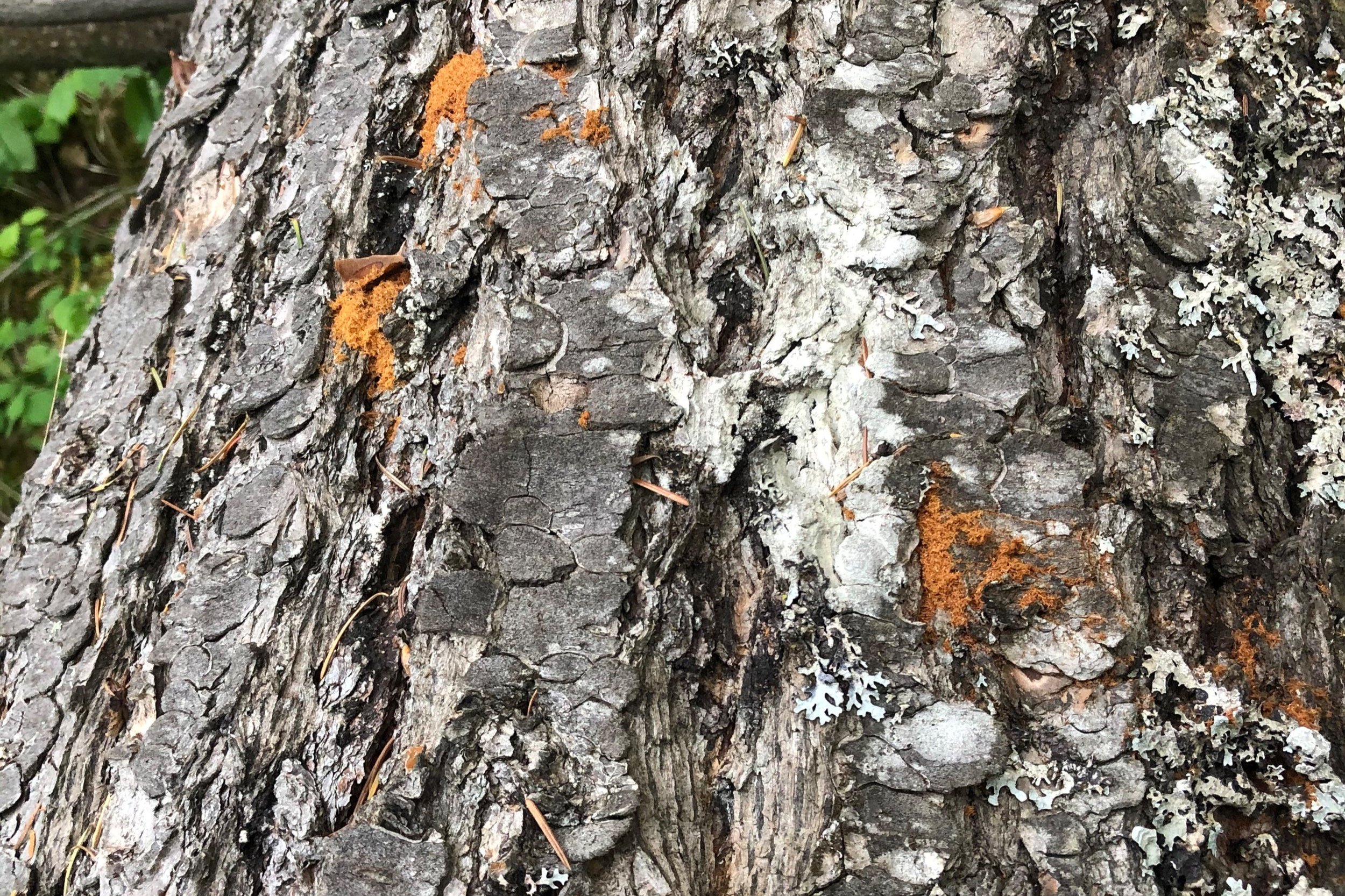Healthy Tree Management = Douglas Fir Bark Beetle Management
/Effective, healthy tree management means effective management of the Douglas Fir Bark Beetle.
For the past many years, one of the biggest threats to the health of Columbia Valley forests has been the Douglas Fir Bark Beetle.
Bark beetles attack trees under strain, during periods of drought, for instance, and bore holes in the bark of the stressed trees. Where a healthy tree can fend off the attack by oozing pitch into the holes to force the beetle out, the drought-stressed tree cannot produce an adequate amount of pitch to fight off the little devils.
Warm, dry weather – supportive conditions for the Douglas Fir Bark Beetle
Simply, bark beetles stop the tree's ability to transport water and nutrients. Consequently, the needles of the trees can quickly turn red as the nutrients to the crown are choked off. You may also see small holes, sawdust (also called frass), and pitch or excessive sap flow running down the trunk of the tree. Often over the winter woodpeckers will strip the bark off of infected trees to feed on the larvae.
Extreme or prolonged periods without water, caused by a combination of warm temperatures and drought, weaken trees, making them more susceptible to bark beetle attacks. In some areas, a century of fire suppression has also inhibited the growth of new trees. That means older, denser stands at increased risk of stress, and more vulnerable to infestation.
Our summer and winter warming trends are significant drivers of beetle population outbreaks.
Douglas Fir – a fine host for the Bark Beetles
The Douglas Fir Bark Beetles are small and dark brown with reddish wing covers. The beetles will fly during the spring in search for a new tree as a host. They prefer mature Douglas Fir trees, where they will begin their cycle – build egg galleries, lay eggs, and hatch larvae. As the tree fills with beetles, they emit Methylcyclohexenone (MCH) anti-aggregation pheromones to communicate to other beetles that their tree is at capacity.
Newly hatched larvae feed on fungal spores produced and ocellated in the sapwood that comprises the egg galleries. The feeding larvae and fungus block the water uptake and ultimately harm and kill the infested tree.
What are the signs of infestation?
Three of the most apparent signs of a bark beetle infestation are:
◦ Signs of pitch (sap). Although the pitch is a sign of bark beetle infestation, a tree may exude pitch for several reasons. Sap should not be the only sign used to indicate an infestation.
◦ Frass (sawdust). Frass is typically evident at the beetle entry holes, where they burrow into the tree.
◦ Fungal spores or fruiting bodies. Spores can develop in the later stages of an infestation.
◦ A cluster of red and dead fir trees can indicate an outbreak
Learn more about how to identify an infestation of Douglas Fir Bark Beetles.
How can I SAVE my Douglas Fir trees?
Once infestation occurs, there is no way to reverse the damage beetles cause. However, there are various options to aid in protecting and preventing infestation.
Managing Bark Beetles through our MCH Patch program
When healthy levels of Douglas Fir beetles populate forests, they can play a critical role in the development, ageing, and rebirth of entire forests. However, as bark beetle populations increase, so do the number of dead or dying trees.
This increase results in dry "red-and-dead" standing Firs and poses a significant overhead risk to surrounding traffic and structures. They also increase wildfire risk for residential, commercial, and public properties. Further, if the infested wood is not properly disposed of and removed, the infestation can spread.
Keep in mind, too, that it's not just standing trees that can host bark beetles. Fallen trees can also provide a home to the bark beetle. When you collect firewood to bring home, be sure to select wood that is not infested.
Green Leaf Tree Services Ltd. will initiate an MCH Patch program for Bark Beetles. As with beetles who emit the pheromone to communicate that a tree is full, we utilize MCH beetle block patches. The patches provide a slow release of the naturally occurring pheromone to prevent Douglas-fir Bark Beetles from choosing host trees in the area.
MCH is applied as a 'bubble cap' attached to individual trees or trees spaced in intervals to create a 'pheromone cloud' over a larger area. MCH is an effective and inexpensive method to prevent bark beetle outbreaks, especially if paired with a seek and remove green attack trees management plan.
We aim to install patches before the annual beetle flight when it warms up in the spring, ideally, before mid-April.
Green Leaf Tree Services Ltd. offers a range of services that can aid in the prevention of bark beetles and help protect your trees.
Helpful links for more information:
https://www.greenleaftree.ca/blog/2021/6/23/signs-of-douglas-fir-bark-beetle
https://www2.gov.bc.ca/gov/content/industry/forestry/managing-our-forest-resources/forest-health/forest-pests/bark-beetles/douglas-fir-beetle
For more information on MCH Patches, tree/property assessment, or tree removal services, please CONTACT US.











